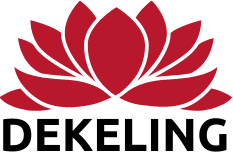The Four Forces are a traditional Buddhist practice sequence that provide a structure for overcoming the influence of patterns of thought, speech and behavior that cause suffering. The four forces are
- Regret
- Reliance
- Remedy
- Resolution
Regret requires that you acknowledge a habit-pattern, at the very least to yourself, and that you become clear about the harm that was done, to yourself and others when the pattern played out. An example of a pattern would be a flash of jealousy that caused an angry comment.
Regret need not activate shame or guilt. The pattern is not evaluated through the lens of what your culture deems ‘appropriate behavior’. It is more simply evaluated as leading towards suffering, or away from it.
You may think, say, or do harmful things for a long time without understanding or even seeing their impact. Consider unintentional racism. In that case, guilt is not required to undermine the pattern. Regret is.
Finding sincere regret raises the energy of intention needed to notice and stop the pattern. You recognize that it is causing harm, intended or not, and like a person who discovers that their poor posture brings them neck pain, you take action to stop creating the causes of suffering. Maybe you overcome the habit of slouching. Regret alone is not complete, the other steps are required to disrupt a pattern, and most likely the steps will need to be repeated over time, along with mediation and other practices.
The practice of regret is simple: notice how allowing this pattern to play out creates a habit in which the pattern plays out on autopilot, without awareness, and see how it plants the seeds of future suffering. If you ate cheese and it made you sick, you’d regret having eaten it, and the habit of eating cheese will be easier to break as long as that understanding is present.
Reliance is the process of reconnecting and recommitting to the practices that help you keep this harmful pattern in view. Most any practice that inspires you and helps you see the pattern clearly will do this: mindfulness, shamatha, confession practices—there are many. Experiment and use the ones that work best for you.
Think of Remedy as a balancing mechanism for your tendency to repeat the harm of a pattern. For example, as a remedy, you might do something positive, even if seemingly unrelated, thereby strengthening the positive qualities or habits that you already have. This is an indirect method, but it usually helps. As the positive patterns increase and strengthen, they vanquish their opposites. While continuous awareness is even more ideal than creating positive habits, replacing negative habits with positive ones is a great stepping stone. Again–keep in mind that ‘positive’ and ‘negative’ here do not refer to social norms, but to whether a habit leads to suffering or to freedom from suffering.
The efficacy of balancing a negative action with a positive one does not mean that you can ‘buy’ your way out of wrongdoing. If you destroy rainforest and create a food shortage for local indigenous humans and animals, it may not remedy your tendency towards selfish action to build a library in your hometown with the profits. Choose carefully.
Remedy commonly includes a heartfelt apology, making amends and even restitution. Again, the intention is to undermine the pattern. The most powerful remedies help us see the impact and intention of our thoughts, speech and actions more clearly and more consistently. They help us honestly connect with the harm we have caused, and they help us see how our actions are the basis for our future actions, otherwise known as karma. They also help us repair and strengthen our connections to others, so we gain a felt sense of our interconnectedness. Those connections help us notice that our intention and impact may not necessarily be the same.
Resolution—sometimes called ‘resolve’–is the process of strengthening the intention to not let the pattern play out unintentionally again. It’s a sense of determination to do whatever it takes to free yourself from this form of self-harm. If you lie, for example, having seen and felt the suffering it causes you and others, and acknowledging that openly, you build intention, awareness and supports to help you immediately notice the pattern arising, and to disrupt that habit.
If you cannot find the resolution to disrupt or uproot the pattern yet, then you are not clear about the extent of the suffering it brings you. You may still be confusing some temporary pleasure it brings with the longer-term consequences. Or you may not yet personally connect to the pattern’s impacts, and may not yet be aware of how the harm you do to others harms you, too.
Expand your understanding the pattern’s dynamics by increasing the timeline of impact further into the past or future, and by contemplating your connections to a wider circle of people, places and things.
To practice the four forces is to take ownership of your own mindscape. It is to bring discipline and common sense to your habits and their impacts. It is to train consistently and deeply in uprooting the causes of suffering in your life, one event at a time. In that way, even the mistakes you make when propelled by negative habit-patterns become a cause of awakening.
